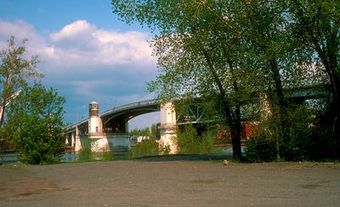Lachenaie
Lachenaie, Qué, pop 21 709 (2001c), 18 489 (1996c), incorporated in 1972 as a city, in 2001 it was amalgamated with 2 other cities to form the new city of TERREBONNE. Lachenaie lies along the north bank of the Rivière des Mille Îles at its confluence with the Rivière des Prairies. The name is a reminder of the role played by Charles Aubert de La Chesnaye (1632-1702) as founder and seigneur of the original settlement.The old agricultural settlement dates back to 1672 when the first colonists arrived. Its history is steeped in the FUR TRADE. La Chesnaye was involved in the fur trade as were Jacob Jordan (1741-96) and Nor'wester Peter Pangman (1744-1819), 2 of the last seigneurs in the late 18th century.
The settlement was devastated 3 times by the Iroquois under the leadership of Chaudière noire (Black Cauldron) from 1689-92 near the end of the IROQUOIS WARS. The surviving 33 colonists prospered under the treaty with the Iroquois (1701) and by 1765 there were 352 inhabitants. In 1845 the municipality of Lachenaie was created, but it was abolished 2 years later. It was then set up as the parish municipality of Saint-Charles-de-Lachenaie in 1855. Its name was shortened to Lachenaie when it was incorporated as a city (dissolved 2001) in 1972.
Modern Lachenaie grew rapidly after 1965 with the openings of expressways 25 and 40, making for easy access to and from MONTRÉAL. Lachenaie has since become one of the most picturesque residential suburban communities of metropolitan Montréal.

 Share on Facebook
Share on Facebook Share on X
Share on X Share by Email
Share by Email Share on Google Classroom
Share on Google Classroom

